A blue shadow falls across the corner of a plain, whitewashed building. Robert Stack watches as the sun plays its game with shapes and colors. It is the same game it has played for billions of years. Mundane, yes—literally the most mundane occurrence in the world—but it is complex enough to keep an artist’s attention for a lifetime.
From an early age, Stack learned to observe the world around him through a keen set of eyes. His father and grandfather, both photographers, engineers, and inventors, instilled within him a liking for the study of optics and an interest in astronomy. They built telescopes in their home in Chadds Ford, Pennsylvania, driven by their fascination with sight. Through mechanics they could see further out into the world, but through artistic training, Stack learned to see deeper into it. The interaction of light and shadow became a source of endless fascination and creativity for the budding artist. He studied at Tyler School of Art and then returned home to the Brandywine Valley of Chadds Ford.
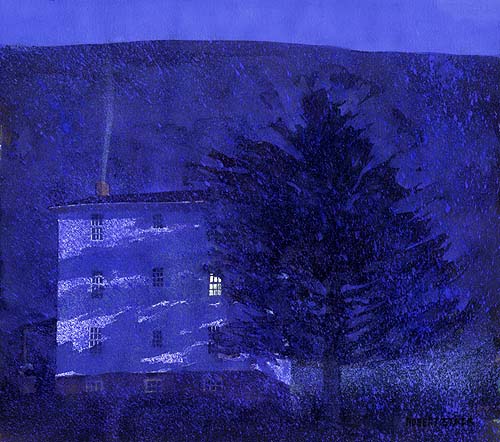
images courtesy of Robert Stack
www.robertstackart.com
Known today as Wyeth Country, Chadds Ford was the home of the legendary Howard Pyle School. Students of this school, among them the famous N.C. Wyeth, became the artists and illustrators that would drive forward America’s golden age of illustration and advance America’s art scene throughout the early 1900s. The rich surroundings of the Brandywine Valley and the Howard Pyle School gave Stack a lineage of artists to follow and study. The area also led him towards a different tradition: the equestrian tradition.
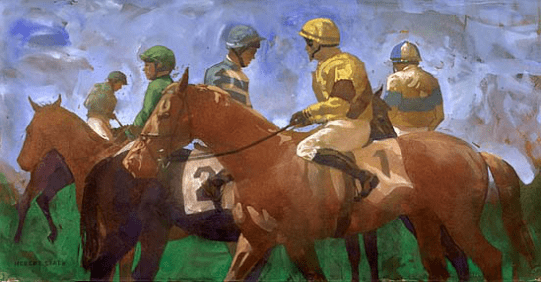
images courtesy of Robert Stack
www.robertstackart.com
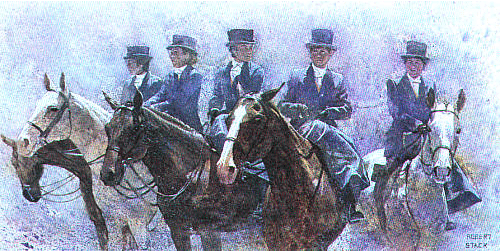
images courtesy of Robert Stack
www.robertstackart.com
The Brandywine Valley, in addition to being Wyeth Country, is also horse country, and it didn’t take long for the horse to become an important subject in Stack’s work. In 1995, the American Academy of Equine Art honored his watercolor, Line Up, with the Ruth E. Robbins Award. Other paintings have become the official posters for the Devon County Horse Show and Dressage at Devon.
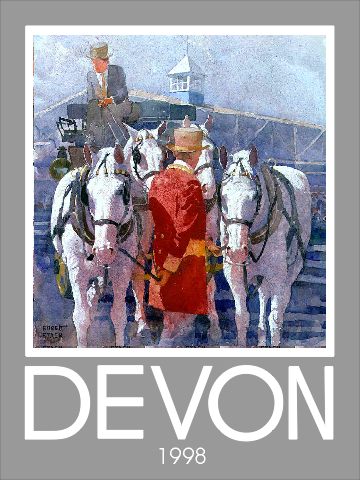
www.robertstackart.com
The horse is a subject matter and a perpetual source of inspiration for Stack, but it is only one aspect of his paintings. The subject becomes secondary in importance to the light and shadow that act upon it. Stack remarks, “Light is usually the first thing I think of after a painting idea hits me. Sometimes, seeing something cast in light is the painting idea.” Regardless of subject matter, Stack’s work shows strength in its careful observation of light and shadow.
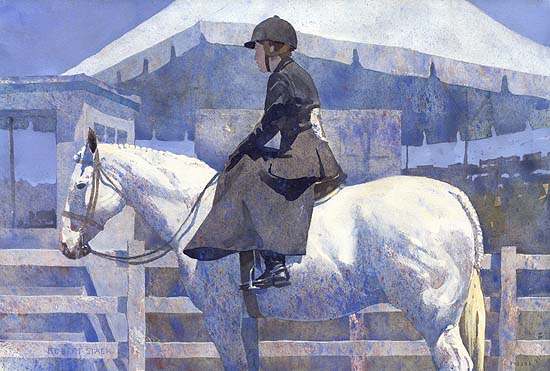
images courtesy of Robert Stack
www.robertstackart.com
He builds up a painting vertically, applying layers and layers of gouache paint over a watercolor sketch. Eventually he creates a vibrating field of color. It may resonate into light or slither away as a shadow; either way, its grainy, pixilated colors are transformed within the composition. The paint becomes the light that burnishes the back of a grey mare. It becomes the implied silence in an eerie, sunless scene. It is that same elusive light that Stack has studied forever; the same light that came back to his eyes upon first peering into a telescope.
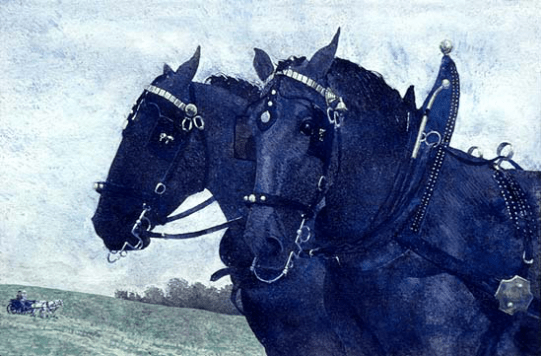
images courtesy of Robert Stack
www.robertstackart.com
Visit Robert’s website for more images and information.

Wow, amazing blog layout! How long have you been blogging for?
you maje blogging look easy. The full glance of your website is great,
let alone the content material!